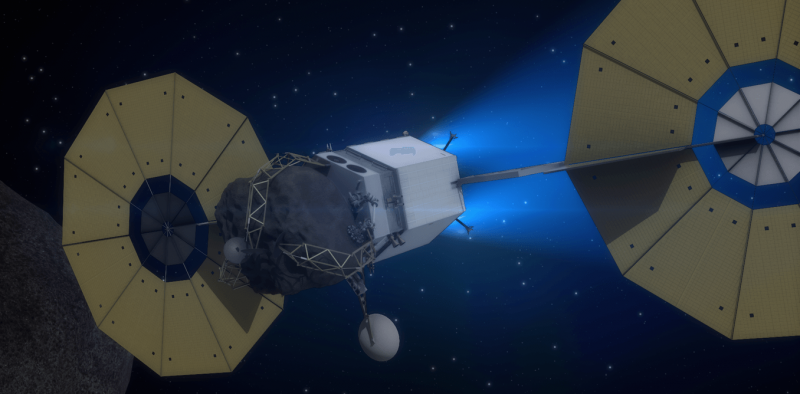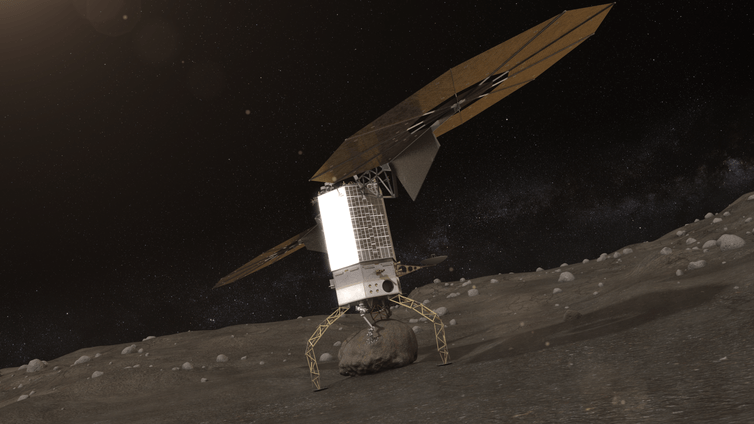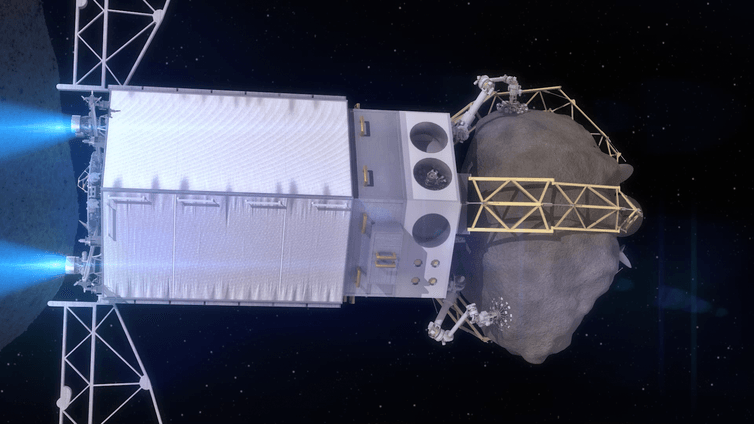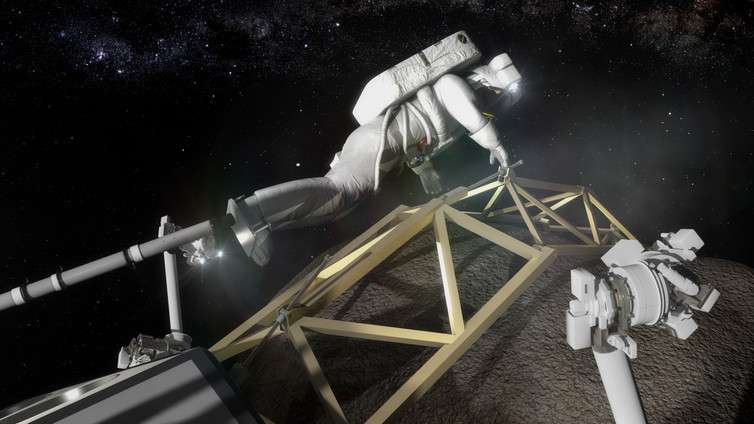How to capture an asteroid – and why we should go to such trouble

Asteroids were once viewed as the vermin of the sky, disrupting astronomical observations by leaving streaks on long-exposure photographic plates used to take pictures of the stars. How times have changed. These remnants of the early solar system are now seen as key targets for space science and, just possibly, for future space commerce.
The Japanese Hayabusa spacecraft successfully returned grains of dust from asteroid Itokawa in 2010. And NASA have drawn up plans for an Asteroid Redirect Mission to bring back an entire boulder from a near Earth asteroid and park it in orbit about the moon. Recent NASA funding changes mean the project's future now looks uncertain, but there's still good reasons for developing the capability that will help us capture an asteroid.
So, how could it be done? First, NASA would launch a large robotic spacecraft using a chemical rocket and a highly efficient solar electric propulsion system that would enable it to travel to a suitable target asteroid. The spacecraft would then carefully approach the asteroid and snatch a large multi-tonne boulder using a robotic grapple, before finally hauling the boulder back to the moon. Once parked in orbit about the moon, the captured boulder would provide an easily accessible target for a future crewed mission to explore sometime in the 2020s.
The asteroid mission would also provide an opportunity to test a way of nudging asteroids out of their current orbit. This "gravity tractor mechanism" could be useful if an asteroid is ever found to be on a collision course with Earth. Once the spacecraft had captured the boulder, it would orbit the asteroid and fire its solar electric propulsion system. As the boulder moved with the spacecraft, it would also very gently pull the asteroid along due to the weak gravitational attraction between the two.

Why is it worth it?
Aside from creating opportunities for some fascinating space science, capturing and delivering a large boulder to the moon would open new ways of using asteroid resources. A key element of human spaceflight, whether deep space or space tourism, is the provision of water. But even if future launch costs fall as low as say $1,000 per kg (current costs vary but are around $10,000 per kg), bulk water delivered to low Earth orbit would still be at least 20 times more expensive per litre than a good single malt whisky.
Water is available in the form of ice in shaded craters on the moon, but it would take so much energy to lift it from the surface into orbit that it could be easier to extract it from asteroids. Our studies have shown that a useful quantity of water is available in the family of near Earth asteroids and that there are a number of easily accessible targets. We could extract the water from the target rocks by bagging them in plastic and using solar heat to bake out the water resource.

This water could supply not only national space agencies and future space tourists, but also satellite operators who could "crack" the water using solar-generated electricity to get at the hydrogen and oxygen it's composed of to use as fuel. In this way, asteroid water could create fuel for space tugs travelling between low Earth orbit and higher geostationary orbit where most communications satellites sit.
While the multiple goals of the Asteroid Redirect Mission provide exciting opportunities, there is perhaps the nagging question of risk. If an objective of the mission is to demonstrate the deflection of near Earth asteroids, why deliberately push part of one onto an Earth return trajectory? Reassuringly, the boulder would actually be left in a stable orbit about the moon, and in any case the size of boulder to be returned would quickly burn up in the Earth's atmosphere in the event of a mishap.
Although it seems to have lost political backing for the time-being, the NASA Asteroid Redirect Mission represents an important proof of concept for asteroid capture and return. If we can later engineer truly practical schemes to extract and return water (and other materials) from near Earth asteroids at a cost less than lifting it out of the Earth's deep gravity well, then someone will have a viable business.

Provided by The Conversation
This article was originally published on The Conversation. Read the original article.
![]()




















